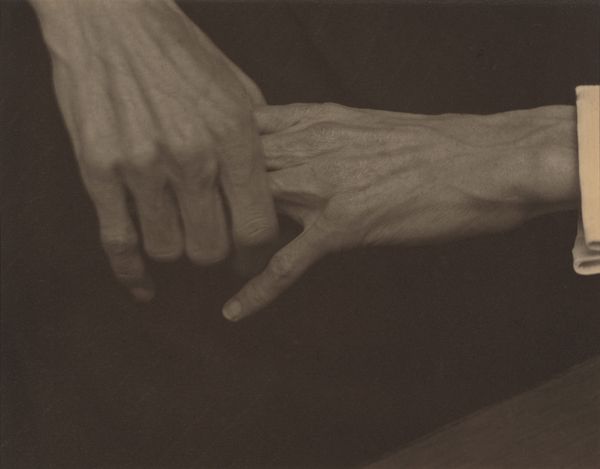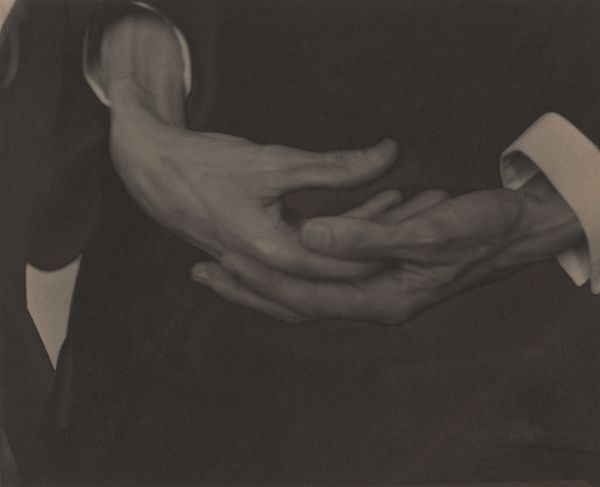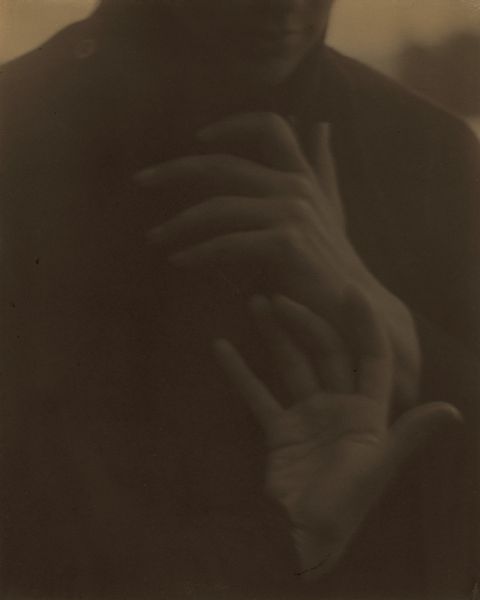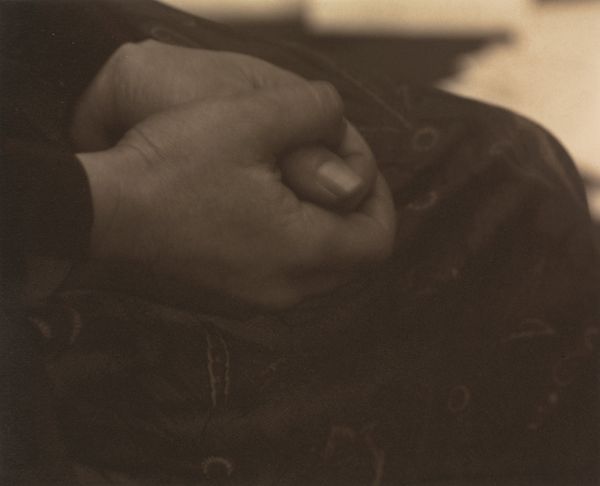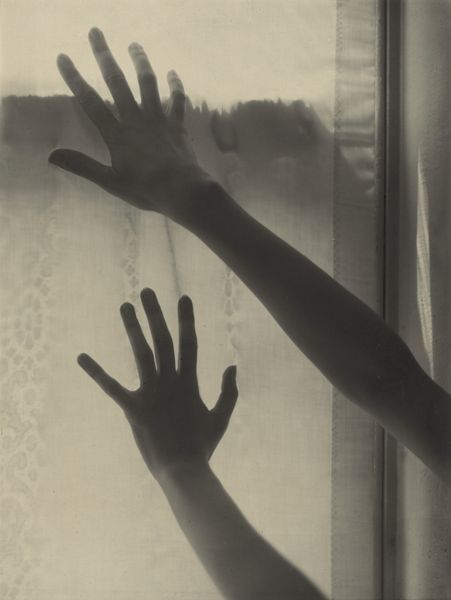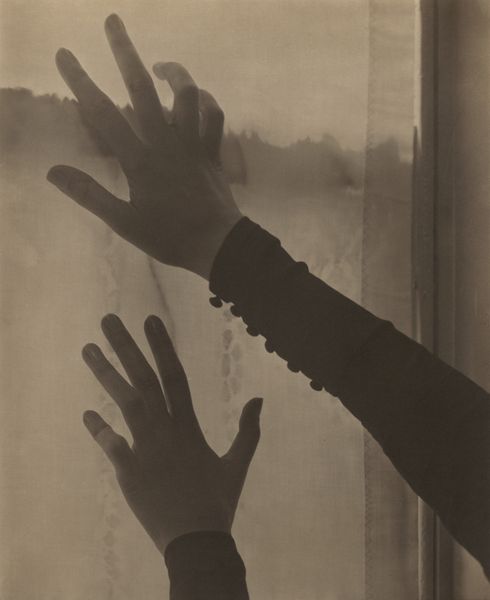
photography, gelatin-silver-print
#
portrait
#
film photography
#
pictorialism
#
photography
#
gelatin-silver-print
#
film
#
modernism
Dimensions: image: 17.9 x 24 cm (7 1/16 x 9 7/16 in.) sheet: 20.1 x 25.3 cm (7 15/16 x 9 15/16 in.) mat: 56.5 x 46 cm (22 1/4 x 18 1/8 in.)
Copyright: National Gallery of Art: CC0 1.0
Editor: This photograph, "Hands and Grapes" by Alfred Stieglitz from 1921, rendered in gelatin silver print, has such a tactile quality, even though it's just a photograph. The soft sepia tones are gorgeous. What can you tell me about it? Curator: Look closely at the materials here: gelatin silver. Think about the process. Stieglitz meticulously controls this "simple" photograph. The very act of capturing and developing speaks to a burgeoning industrial complex that simultaneously democratized art making through accessible processes, but also upheld artistic intentionality, framing Stieglitz’s work as decidedly “art”. It makes me question the boundaries. Editor: So, the choice of gelatin silver itself elevates the work from mere snapshot to artistic statement? Curator: Precisely. Think of the labor involved, the careful balance of chemicals, the darkroom as a workshop. Consider the societal context: the rise of mass media versus the desire to create something unique and valuable. The choice of process pushes us to ask, what *is* photography? Is it a skill, is it a craft, is it an art? Stieglitz uses its materiality to engage in that debate. Editor: It's funny, I hadn't considered the material aspect so deeply before, but it changes the whole perception. Seeing it this way brings such depth. Curator: And that is precisely the point: not just to passively admire, but to actively consider what constitutes "art" itself. Hopefully, that prompts viewers to consider and examine the broader system within which artworks are conceived. Editor: Well, this was super interesting; it highlighted so many aspects that escaped me on my first impression. Thank you!
Comments
No comments
Be the first to comment and join the conversation on the ultimate creative platform.
